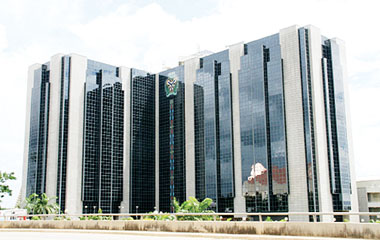
The Central Bank has increased the CRR to 50 per cent.
The 50 per cent cash reserve requirement (CRR) on public sector deposits, which was announced by the Central Bank this week, has continued to cause ripples in the banking sector and has been described by some analysts as a guideline which would impact negatively on the banks.
Cash Reserve Requirement is the portion, expressed as a percentage of bank’s deposit balances, which banks must have as reserve, in cash, with the Central Bank. The percentage is usually determined by the country’s Central Bank. The reserve ratio is one of the instruments used to influence the money supply in a country and drain out or add up excessive money from the system.
If the Central Bank increases the percentage, the available money for the banks to lend and make other transactions will reduce and vice versa.
The Monetary Policy Committee (MPC) stunned the market with a public sector deposit reserve requirement. While the status quo on the key monetary policy instruments was maintained at 12 per cent, the MPC introduced a 50 per cent cash reserve requirement on all public sector deposits.
An analyst with Renaissance Capital, an investment bank, Adesoji Solanke, said though it signals the desire to tighten monetary policy, the policy measure adds to the headwinds affecting the Nigerian banking sector this year and is on balance, negative for the sector.
“We view the impact of this as Negative for the banks. This is a new measure in addition to the 12 per cent CRR on all deposits, which we believe signals tightening of monetary policy, most likely to protect the naira,” he said.
“This could be quite a headache, as in our view, this policy will put upward pressure on their funding costs as they borrow to improve liquidity” he said, especially for smaller banks particularly Skye, Fidelity and FCMB (and to some extent, Diamond).
“We won’t rule out the possibility of seeing headlines on a liquidity crunch on the back of this, which the Central Bank governor subtly hinted at” he said. According to him, from an interview of the Central Bank governor post the meeting, the governor implied that for the 6 or 7 banks that account for the bulk of these deposits, the Central Bank will be monitoring their liquidity positions to avoid a distress scenario,” he added.
Mr. Solanke said the overbearing impact for the banks is that their Net Interest Margin (NIM), which is calculated as a percentage of interest bearing assets, will come under pressure as 50 per cent of all public sector deposits on which the banks pay some interest will now not earn any interest on the asset side.
“When you consider that the banks already set aside 12 per cent of total deposits in the CRR account at the Central Bank, this measure is additionally punitive. We expect it to lead to a rise in banks’ funding costs and put some downward pressure on NIMs as the Central Bank does not pay interest on CRR balances”.
“This is a risk for all the banks and while the tier 1 banks (bigger banks) will benefit from the rise in liquid asset yields, the question is to what degree will rates have to rise to sufficiently offset the revenue losses on the increased cash balances that will now have to sit at Central Bank earning zero interest?” he said.
He added that while most of the other banks have higher levels of exposure to public sector deposits, “we expect the tier 2 banks (Skye, FCMB, Fidelity etc.) to face more funding cost pressures than the tier 1 banks, given that public sector deposits form a larger proportion of their deposit base. This essentially implies that the NIM gains we were looking for in 2013 for these banks which were to be driven by funding cost improvements, now looks challenging”.
Exposure of the banks to public funds
According to Mr. Solanke, Nigerian banks don’t typically publish the proportion of their deposits that is public sector nor have it readily available when asked. He, however, said First Bank Nigeria reported 27 per cent of first quarter 2013 deposits as public sector.